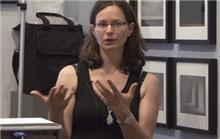
My sculptures Brainwasher, Mother and Daughter, The Struggle of Being a Mother and Artist, Female Peg and Milky Boobs and a collection of drawings about my experiences of childbirth and motherhood have been exhibited in this show that me and my talented classmates have put together to close this exceptional year.
The show has been based in Gloucester building with a real variety of works displayed on the ground floor, mezzanine and the upstairs floor. From painting to installation and from sculpture to drawing the show in my opinion has been very successful and communicates well our levels of artistic development.
I received positive comments from the work I have exhibited here, specially from Female Peg with people saying that it was simple but very effective, with someone even daring to say that she could imagine a piece like that hanging on a major art gallery like Saatchy, which I thought it was quite a nice compliment and it encouraged me to aim higher.
My final piece Brainwasher has been also acclaimed by the public attending the exhibition, qualifying it as funny, original and powerful. Even if I could not managed to make the object to move at the end, having the cable attached to it and plugged into the wall has provoke a lot of thoughts and reactions. I have encountered problems when looking for mechanisms to make it move and I have learned that for future work I should focus first on the technical side of the piece (if required) and then work with the rest so dissapointment can be drastically avoid, specially when a piece is created to be exhibited in a public show.
Painting the exhibitions spaces allocated to display my work white was something intuitive, I felt that the work needed to stand out in the space and it will looked good against white walls and floor. However whilst I was painting the floor I did not think off whether I wanted people to walk around in the spaces or not and after finishing I had to make the decision, which it was people would be allowed to walk around despite leaving foot prints all over the place and ending with the inmaculate feel of it. Someone suggested that I could closed the spaces with a strip of wood at the bottom as a sign of no entry to the viewers and leave the work as an installation to be looked at from outside. However, in the event of doing this the appreciation of the work would have been very different from how the work is expressively designed to engage with the viewer. My work needs to be confronted, looked at from the front, like when you grab a bull by its horns or which is equal to the English idiomatic expression of graspping the nettle. I have learned that there is always something new to learn in each exhibition that you get involved, I think years of experience on setting shows will provide me with the skill of getting everything right considering all aspects of the work and its environment, but at the moment is all about experimenting and seeing what works for me and my work.
In the private view I felt confident about my work, from my experience in Vyner Street Gallery the previous month, I have learned that the work despite being finished in appareance it is never finished without convincing people of the ideas behind the work and to lead them to a way of connecting with the work in the same way that you do. For the first time I was proud of my work, I really needed to believe in it and to take this positive attitude onto my next course. I believe the more I talk about it the better I get getting the meanings across.









